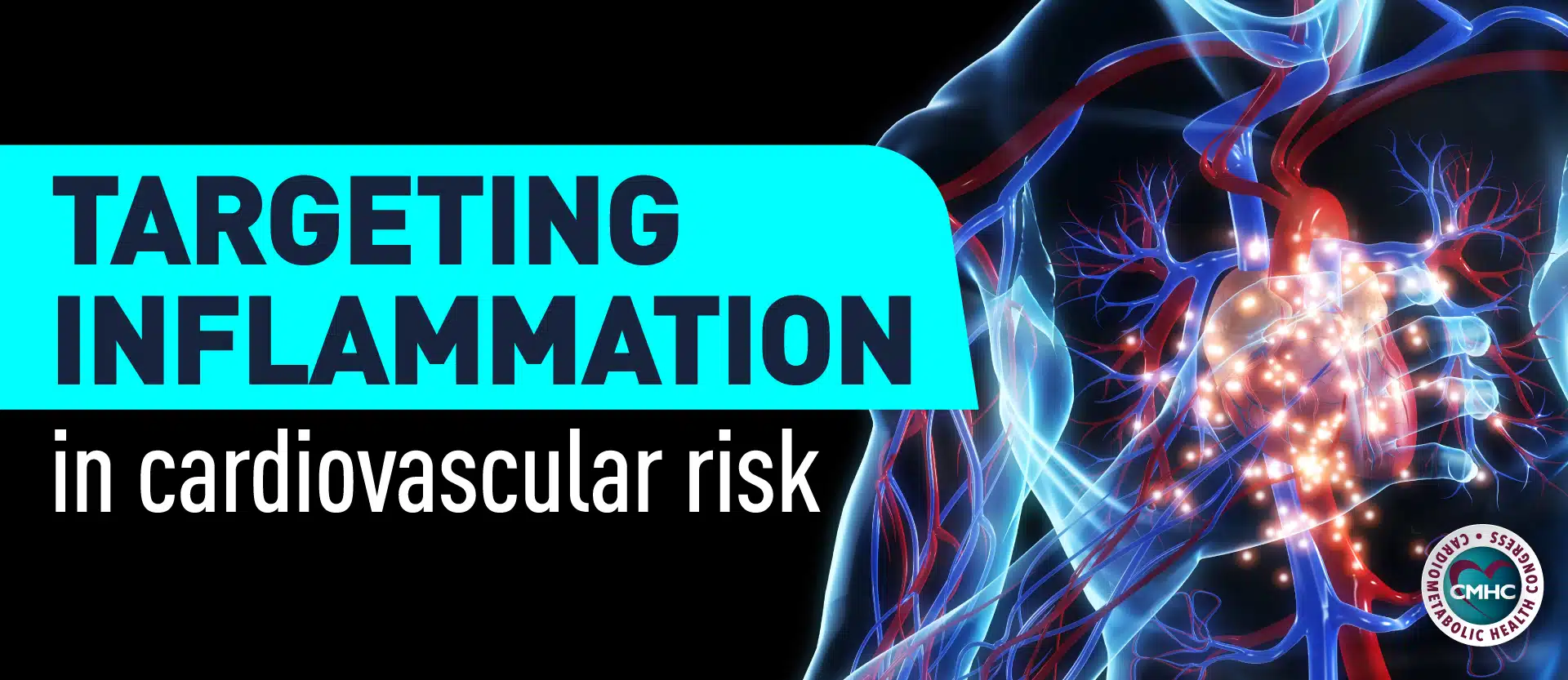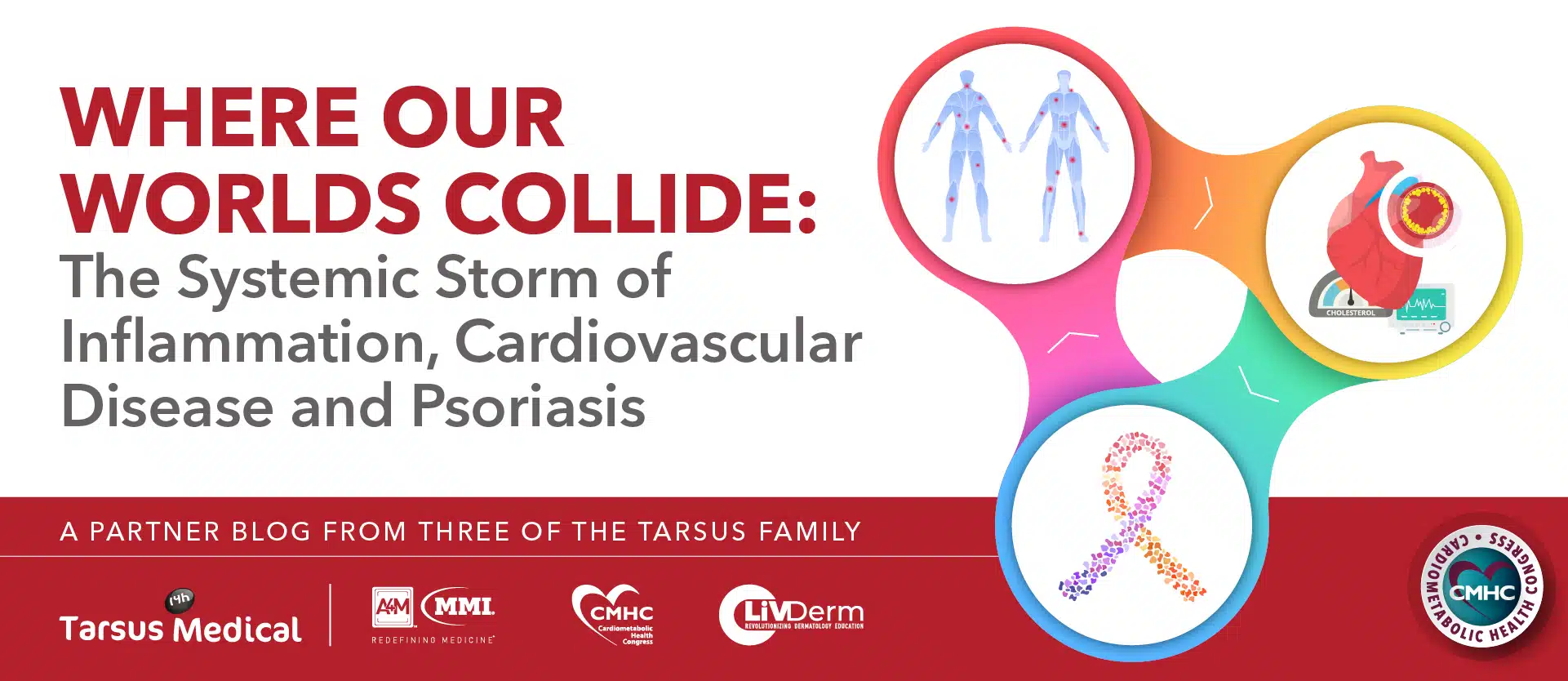Data from several studies have suggested that persistent low-grade inflammation has an important role in the pathophysiology of many cardiometabolic conditions. Inflammatory markers, such as interleukin-6 (IL-6) and high-sensitivity C-reactive protein (hs-CRP) have been associated with increased risk of cardiovascular adverse events, as well as insulin resistance and hyperglycemia. Canakinumab is a human monoclonal antibody that targets interleukin-1 (IL-1), which is upstream of IL-6 and hs-CRP, thereby decreasing IL-1 signaling and consequent inflammation. Last year, the authors of the CANTOS trial demonstrated that treatment with canakinumab led to the reduction of cardiovascular events independent of lipid levels in patients with prior myocardial infarction and high levels of hs-CRP (≥2 mg/L). The results of this landmark trial served as important proof-of-concept to support the inflammation hypothesis in the pathophysiology of atherothrombosis.
Because inflammation has been shown to play a role in insulin resistance, defective insulin secretion, and the development of type 2 diabetes in pre-clinical experiments and observational studies, authors of the CANTOS trial also tested the hypothesis that canakinumab treatment reduces the risk of incident type 2 diabetes (T2D). A key secondary endpoint of the CANTOS trial was to assess the effect of canakinumab in reducing the progression of prediabetes to diabetes by measuring the rates of new-onset T2D in prediabetic patients. To do so, the trial enrolled a total of 10,061 patients, out of which 4,057 (40.3%) had baseline diabetes, 4,960 (49.3%) had pre-diabetes, and 1,044 (10.4%) were normoglycemic. Results from this highly anticipated study were recently published in the Journal of the American College of Cardiology by Everett and colleagues.
Baseline concentrations of hs-CRP and IL-6 predicted the risk of incident T2D in patients without diabetes at baseline, and this association was statistically significant after adjusting for potential confounding factors (BMI, family history of diabetes, smoking, exercise, alcohol use, and T2D therapy). In addition, canakinumab was found to have similar efficacy for major cardiovascular events and reduction of inflammation in patients with and without diabetes. However, despite dose-dependent reductions in hs-CRP and IL-6, canakinumab treatment (50mg, 150mg, and 300mg) did not reduce the incidence of new-onset T2D compared to placebo over a 5-year follow-up period. The incidence rates for new-onset T2D were 4.2, 4.24, 4.35, and 4.12 in the placebo, 50mg, 150 mg, and 300mg canakinumab respectively, with no observed statistically significant differences. Modest reductions in HbA1c in prediabetic patients were observed with canakinumab treatment during the first 6-9 months, however, this effect was attenuated over time and not statistically significant after 48 months. Similar effects were seen in patients with existing T2D or normoglycemia at baseline, and no consistent effects were observed for fasting plasma glucose across all groups. The baseline characteristics of patients with pre-diabetes were well-balanced across randomized groups to minimize the impact of specific factors, including baseline HbA1c, lipid levels, fasting plasma glucose, lifestyle factors, antihyperglycemic medications and more.
The results of the study re-emphasize the efficacy and safety of canakinumab as it pertains to reducing the risk of cardiovascular events in both diabetics and nondiabetics, however, also point out the complexity of T2D pathophysiology. The study demonstrated that increased baseline levels of IL-6 and hs-CRP are strong predictors for developing T2D, however, the strong reduction in these inflammatory markers with canakinumab treatment did not reduce the risk of new onset diabetes. This suggests that the relationship between inflammation and risk for T2D is complex, which is not surprising given the multitude of factors that may contribute to the development of T2D. It is possible that different inflammatory pathways beyond IL-1 may contribute to the progression of prediabetes, and studies with other anti-inflammatory agents may elucidate some of the mechanisms by which inflammation affects glucose homeostasis.
REFERENCE:
Everett BM, Donath MY, Pradhan AD, Thuren T, Pais P, Nicolau JC, Glynn RJ, Libby P, Ridker PM, Anti-Inflammatory Therapy with Canakinumab for the Prevention and Management of Diabetes, Journal of the American College of Cardiology (2018), doi: 10.1016/ j.jacc.2018.03.002.

















